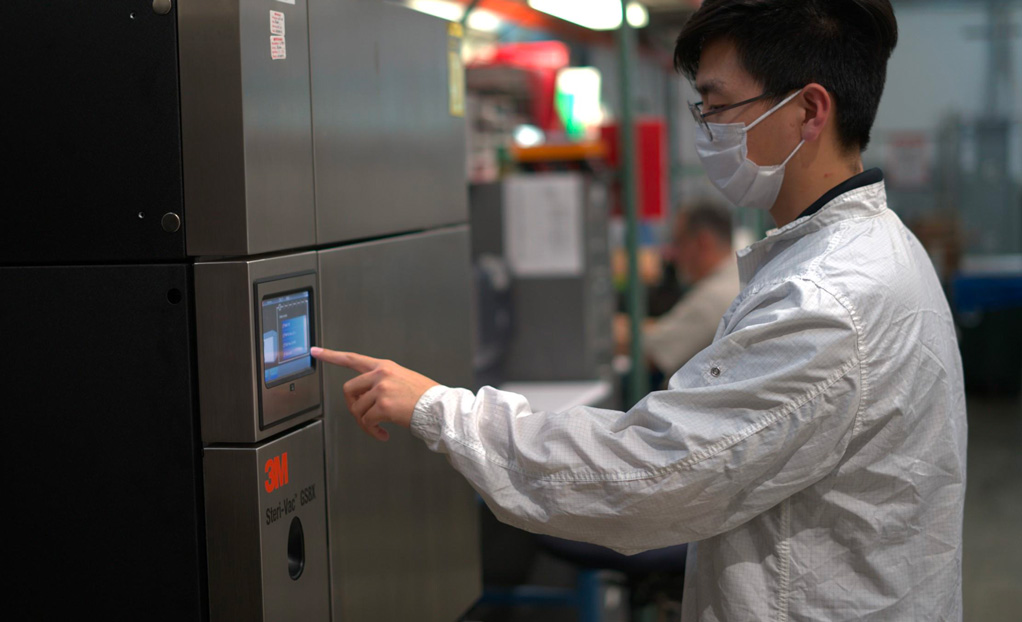Gamma irradiation may be the best choice for your medical device sterilization. But how can you be sure when there are several other options available? Let’s look first at what gamma sterilization is and how it can sterilize your medical devices. Then we’ll look at which medical devices gamma sterilization is best suited for.
What is gamma irradiation?
Gamma rays are similar to an x-ray and are a form of electromagnetic radiation. They go above and beyond an x-ray by delivering higher energy, which can pass through substances like plastic and kill bacteria.
Gamma rays are able to destroy bacteria by fracturing bacteria DNA covalent bonds. Think back to your organic chemistry class and you’ll remember that covalent bonds are shared electrons between atoms. That fracturing, or breaking, inhibits bacterial division. Sterilization occurs on a molecular level as the radiation disrupts pathogens that cause contamination and renders them unable to reproduce.
While the gamma sterilization process destroys bacteria, you may wonder if anything is left behind on your medical devices. Fortunately, the process does not impart radioactivity or leave any kind of residual behind. It does not have sufficient energy to cause treated products to become radioactive.
Gamma irradiation is known as a “cold process.” The temperature of the treated product does not increase significantly, thus earning the “cold process” description. It is an ideal sterilization method for heat sensitive devices for that very reason.
What types of medical devices does gamma sterilization work on?
A key component of gamma irradiation is the thickness of the medical device material. Complete penetration of the device and sterilization is only possible based on that thickness.
Because gamma sterilization does not use humidity, temperature, or pressure to sterilize products, it is a good solution for packaged goods.
Medical devices ideal for gamma sterilization can include:
- Plastic syringes
- Hypodermic needles
- Scalpels
- Surgical blades
- Adhesive dressings
- Surgical gloves
- Gowns
- Masks
- Sticking plasters
- Dressings
- Bottle teats for premature babies
Those items are only a short list of the possibilities. But you get the general idea. Would you believe gamma radiation is also used to sterilize human tissue grafts? Those include bone, cartilage, tendons, heart valves, and more.
What standard does gamma sterilization follow?
Gamma sterilization follows the international standard, ISO 11137, which specifies requirements for validation, process control and routine monitoring in the radiation sterilization of health care products. It applies to continuous and batch type gamma irradiators using the radionuclides 60 Co and 137 Cs, and to irradiators using a beam from electron or x-ray generator.
The ISO standard also provides information and guidance on equipment, irradiation compatible materials, dose setting methods and dosimetric aspects for Gamma, E-Beam and X-Ray sterilization.
Proper gamma radiation equipment and safety
The gamma sterilization process uses radiation. That can obviously leave a negative health impact on a technician if proper safety measures are not in place. It’s critical to not only meet proper standards for sterilizing devices, but to also ensure protection of workers.
The International Atomic Energy Agency (IAEA) drafted safety standards for such work. Those safety standards cover:
- Principal elements of practices
- Individual monitoring of workers
- Workplace monitoring
- Control over radioactive sources
- Irradiator design
- Testing and maintenance of equipment
- Transport, loading, and unloading
- Emergency preparedness and response
While it’s not necessary for you as the medical device manufacturer to be involved in the use of gamma sterilization equipment, you do want to verify the sterilization company you work with follows best practices and recommended safety steps.
Is gamma sterilization right for your medical device product?
The best way to verify if gamma sterilization is the ideal option for your medical device is to consult with your chosen resource. Ask questions about their various sterilization processes, how each is used, and which would benefit your particular product and situation. There may be several factors to consider.
Sterilizing medical devices is an important part of successful healthcare. Becoming fully informed and working with a partner able to meet your needs will set you and your medical devices up for positive outcomes.





